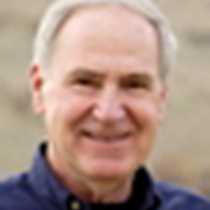Clearwater Country & Hells Canyon
Our entire compliment of guests, all Nomad Travel Group members, was anxious for action after a full day of sailing and sightseeing yesterday. And the planned activities did not disappoint. Guests had two choices: to travel up the Snake River on jet boats about 55 miles from our Clarkston, Washington dock site; or take a motor coach some 100 miles along the Clearwater River in the company of local historian Lin Laughey, to examine Lewis and Clark historical sites. At the end of the day, no one regretted his or her individual choice.
The weather cooperated; it was warm, but overcast. As the day wore on, it became less overcast, and by mid-afternoon, the sun shone through. Despite some forecasts, it did not rain. The ambient air was perfect for photography, and many guests, Naturalist Linda Burbank, and Videographer Alex Joseph all took advantage. The wonders of modern technology allowed some of these shots to be displayed on the big screen during evening recap.
Snake River jet-boaters knew they would enjoy spectacular mountain scenery in the Hell’s Canyon National Recreation Area. They also hoped to catch sight of the canyon’s abundant wildlife. They were not disappointed—it was a veritable menagerie out there. Seasoned observers had never seen so many animals on a single trip. There were Rocky Mountain bighorn sheep too numerous to count—old and young, male and female, big and small. Flocks of wild turkeys that would’ve made Ben Franklin proud (Franklin’s choice for the national bird was the turkey, not the bald eagle, one of which also made an appearance). River otters. Great blue herons at every turn. Hawks. Mule deer. Fisherpersons hoping to catch steelhead. The fauna actually overshadowed the many visual pleasures of the river trip.
Lin Laughey made Lewis and Clark enthusiasts of us all. Born and raised in the area, and a serious student of its history, including the local Nez Perce Indians, Lin is the author of a novel, The Fifth Generation, which won a prize in Idaho this year. The Nez Perce homeland on the Clearwater River contains more closely-contiguous Lewis and Clark sites than any other place in America. We tracked the expedition as it stumbled out of the Bitterroot Mountains in September 1805, crafted five canoes under Indian tutelage, and set off down the Clearwater precisely 205 years ago, to the day. We followed the trail of the Corps of Discovery’s return trip of 1806 and participated in a mock treaty council, learned to make fire, and observed horse races at the site of the Long Camp. The day more than justified this voyage’s title – In the Wake of Lewis and Clark.
At recap, each group explained its observations, learning, excitement and happiness to the other; and we all benefitted. How can tomorrow beat today? We’ll have to wait and see!




